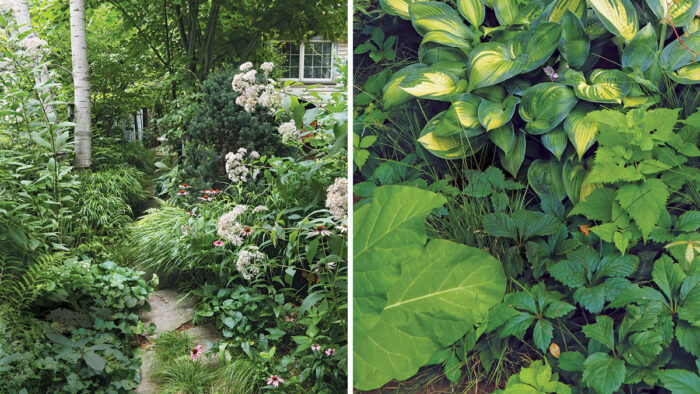
Twenty-five years ago when my wife Kathy and I started searching for a new home for our growing family, she focused on all the qualities one looks for in a new house. I, of course, looked at what every gardener considers imperative—the lot. Thanks to Kathy, we ended up with a wonderful new place. And much to my delight, the property had one particularly important feature—good soil. The other nice bonus was that the backyard bordered a small city park, with lots of open space for the kids to play, so my garden design did not have to include an area for kicking a soccer ball. Plant-wise, however, there wasn’t much other than invasive shrubs and trees. So after removing all the nasty invasives, I had a clean slate to work with.
Starting a new garden from scratch can be daunting, but it’s also a fantastic opportunity to create exactly what you want. My vision was based on the many small English gardens that I was lucky enough to visit in previous years—not the gardens with impeccably maintained lawns and neatly clipped hedges, but those that had plants spilling out of every nook and cranny. Our landscape has been slowly undergoing a transformation over the past decade, from a traditional shade garden to a more naturalistic one that embraces an ecology-first mindset. This evolution, however, hasn’t sacrificed the original intention of my dream garden—that it be a visually appealing space with plenty of activity.
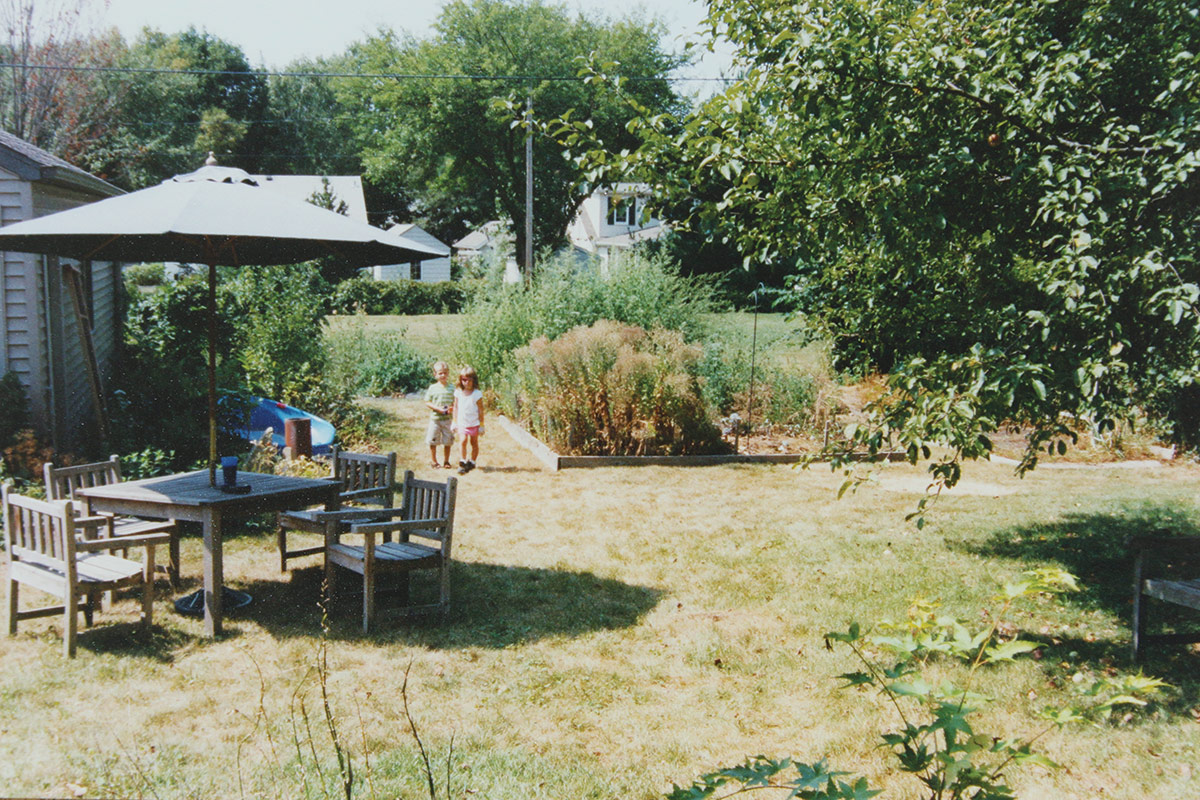
Build a strong a connection between the house and the garden
I was more than a little excited to start working on the new landscape, but adding some much-needed living space to the residence was a more urgent task. We built a new kitchen and living area off the back of the house, but we stressed to our architect that bringing the garden into our home was a big priority. The new back wall of the addition included a double set of French doors and kitchen windows that would allow us beautiful views of the soon-to-be-built garden.
The lot sloped away from the house, so we had to deal with a 6-foot drop from the door thresholds to ground level. The easiest and cheapest solution would have been to build a raised deck, but that would have required view-blocking railings and put us high above the garden rather than enabling us to feel like we were in it. Instead, we designed an elevated patio with three steps down to the entertaining area (centered on one set of the French doors), which then has only two steps to the garden, putting us in the garden instead of on top of it.
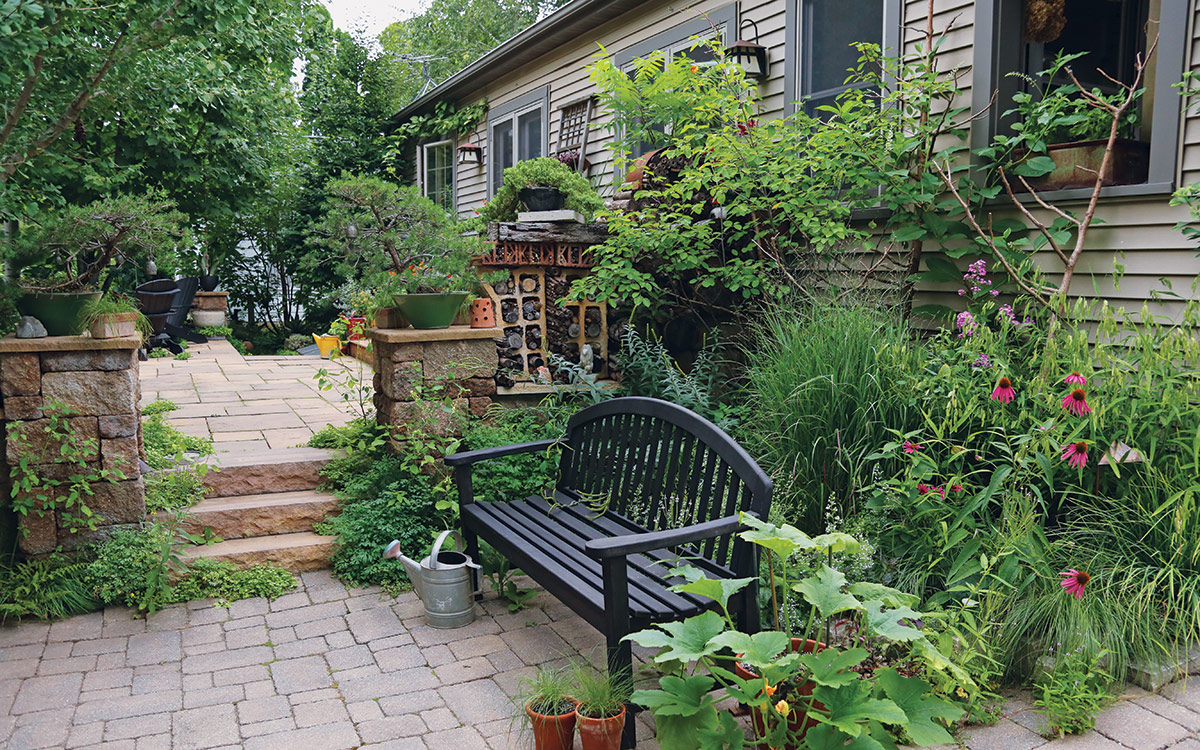
Once the construction project was complete, I began to work on the paths and plantings with what little money was left in the budget. I built a central stepping-stone path centered on the staircase that guides the eye from the house and patio out to the park, taking full advantage of the borrowed view. On the back lot line, I constructed a short wall out of the same rustic blocks that the patio walls are built of, tying together the two spaces with similar materials, yet separating the garden from the park.
A more relaxed planting plan provides visual and ecological impact
Structural plants were the focus after the hardscape was complete. I chose ‘Whitespire’ gray birch (Betula populifolia ‘Whitespire’, Zones 3–6) first for a few reasons. Its upright habit would obscure the utility lines but not interfere with them too severely. It has beautiful bark that would be even more visible if lower limbs were removed, and doing so would allow nice views into the park. And it was a tribute to my professor and mentor who introduced the cultivar.
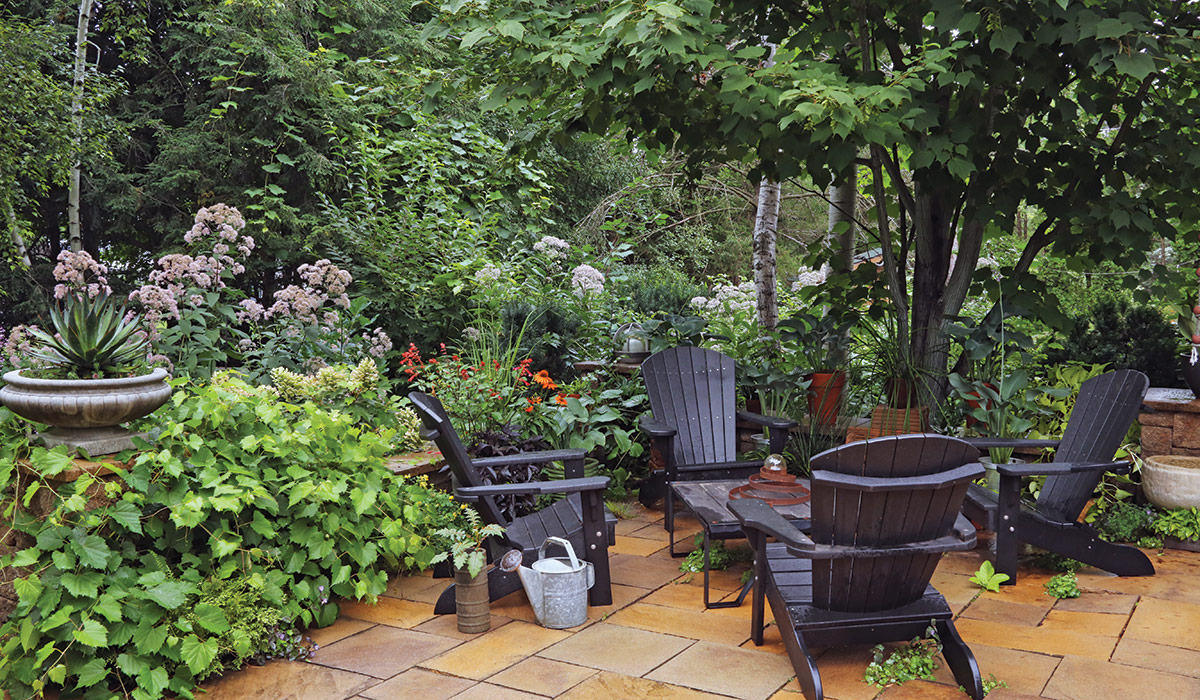
Several other trees were then added to provide height and beauty and to eventually create the shade that would make the backyard more enjoyable for people. A triad of Canadian hemlock (Tsuga canadensis, Zones 3–7) helped hide a utility pole at the back of the lot. We couldn’t get shade quick enough next to the seating area on the patio, so the fast-growing trembling aspen (Populus tremuloides, Zones 2–8) was chosen not only for its rapid growth but for its pleasing taupe bark and lovely quaking leaves. I knew these aspens wouldn’t last forever due to their aggressive suckering nature, but they provided shade while a slower-growing ‘White Tigress’ maple (Acer ‘White Tigress’, Zones 4–9) sized up.
Shrubs and herbaceous plants were next on the list. At first the garden exposure was full sun, so I designed mixed borders that were chock-full of sun-loving perennials. As the structural trees grew larger and produced more shade, these initial plantings were no longer happy, nor was the once-lush Kentucky bluegrass lawn that occupied the center area. The garden, as all gardens do, evolved over the years—as did my philosophy on gardening. When I started, I cared most about making the landscape beautiful for me and the other people who spent time in it and didn’t devote much time worrying about the creatures that lived—or could have lived—there.
Around this time, by good fortune, I spoke at a gardening conference with renowned entomologist and author Doug Tallamy. After I heard his lecture on the importance of using more natives in our gardens, I was all in. Though I utilized a decent number of native plants in my initial design, I certainly could have used more. So I killed off what was left of the lawn and “plugged in” three native species—rosy sedge (Carex rosea, Zones 4–8), Pennsylvania sedge (C. pensylvanica, Zones 3–8), and eastern star sedge (C. radiata, Zones 4–8). In the years following, I have added many other Carex species to create a tapestry of soothing green shades.
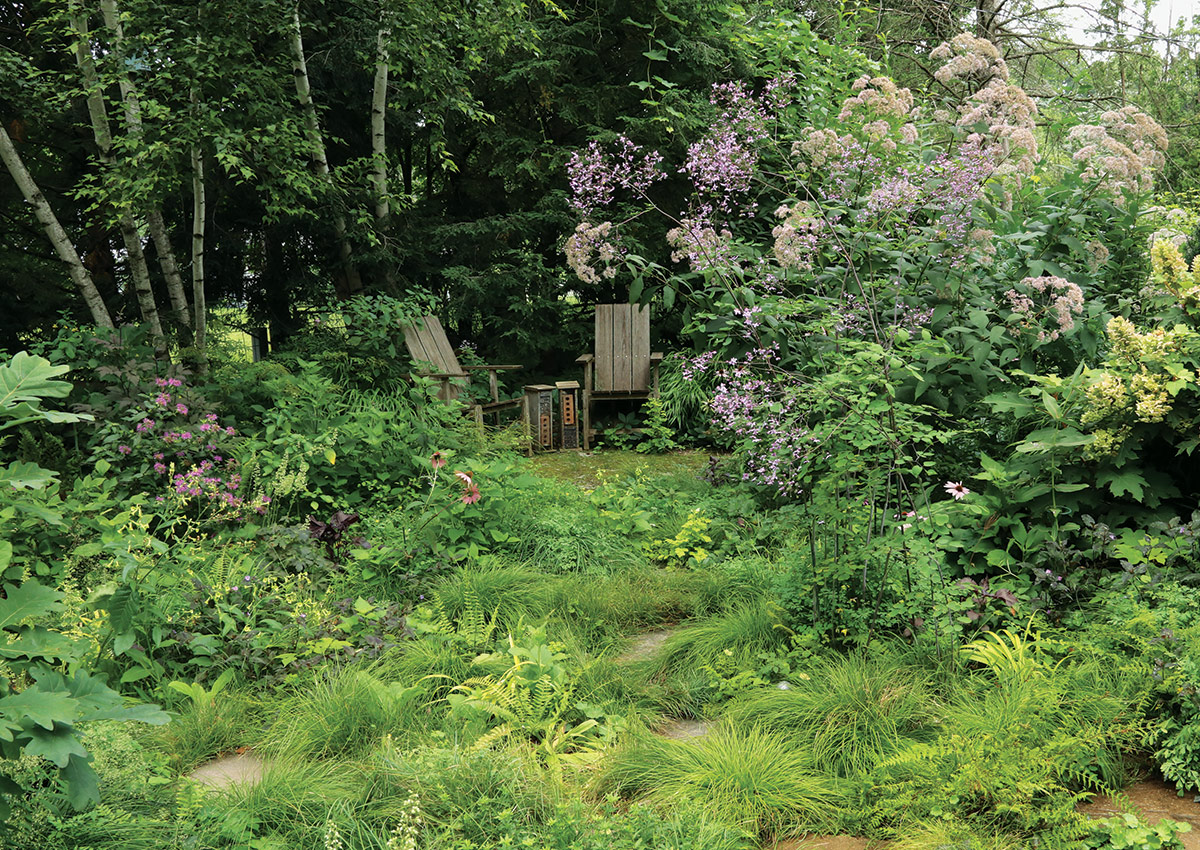
Among the sedges, I planted a multitude of forbs that give the garden color throughout the seasons. For spring interest and to provide nectar for early emerging bees, I planted an array of native spring ephemerals. Plants adding later-season drama include bugbanes (Actaea spp. and cvs., Zones 4–8), which offer some height, and meadow rues (Thalictrum spp. and cvs., Zones 4–7), which—much to my delight—reseed freely. White wood aster (Eurybia divaricata, Zones 3–8) also helps brighten up the shade with its brilliant white flowers. Among several fall bloomers are tall Joe Pye weed (Eupatorium fistulosum, Zones 4–9) and hairy alumroot (Heuchera villosa, Zones 4–9). And there are tons of wonderful ferns that all thrive in this shady spot. These beautiful native species form the foundation of my garden now and are infused with 25 to 30 percent nonnatives. Select exotic species bridge floral gaps when the native species aren’t blooming.
Ensure that ongoing maintenance and substitutions are all eco-friendly

With good planning, I’ve been able to have a garden that has something in bloom every month during the growing season. After all, we gardeners are most drawn to colorful blossoms in the landscape. At the same time, with “right plant, right place” in mind, it’s important to choose eco-friendly plants well-adapted to a site’s conditions so they can live well on what Mother Nature provides, which is more important than ever given our changing climate.
Over the years the plants in my garden have taught me to become a lighter-handed gardener and to work with them instead of against them. These days I find myself acting more like a manager or referee than a “maintainer” that methodically mulches, weeds, and waters. When something dies off, I select a replacement based on the conditions of the space, what I think will play well with neighboring plants, and what contributes to the whole of the garden and the environment. I try to choose plants that help support insects, birds, and other creatures without the input of supplemental water, fertilizers, fuel, and other chemicals. The needy, noncontributing “look at me” plants that I used to grow mainly to impress those that visited my garden have fallen by the wayside. Some exceptions are in a few pots and planters on the patio, but even those are selected to help support hungry hummingbirds and bees. I have heard many a gardener lament that they are “forced” to garden in shade, but I am not one of those; I love my little shade garden and all the plants and animals it supports.
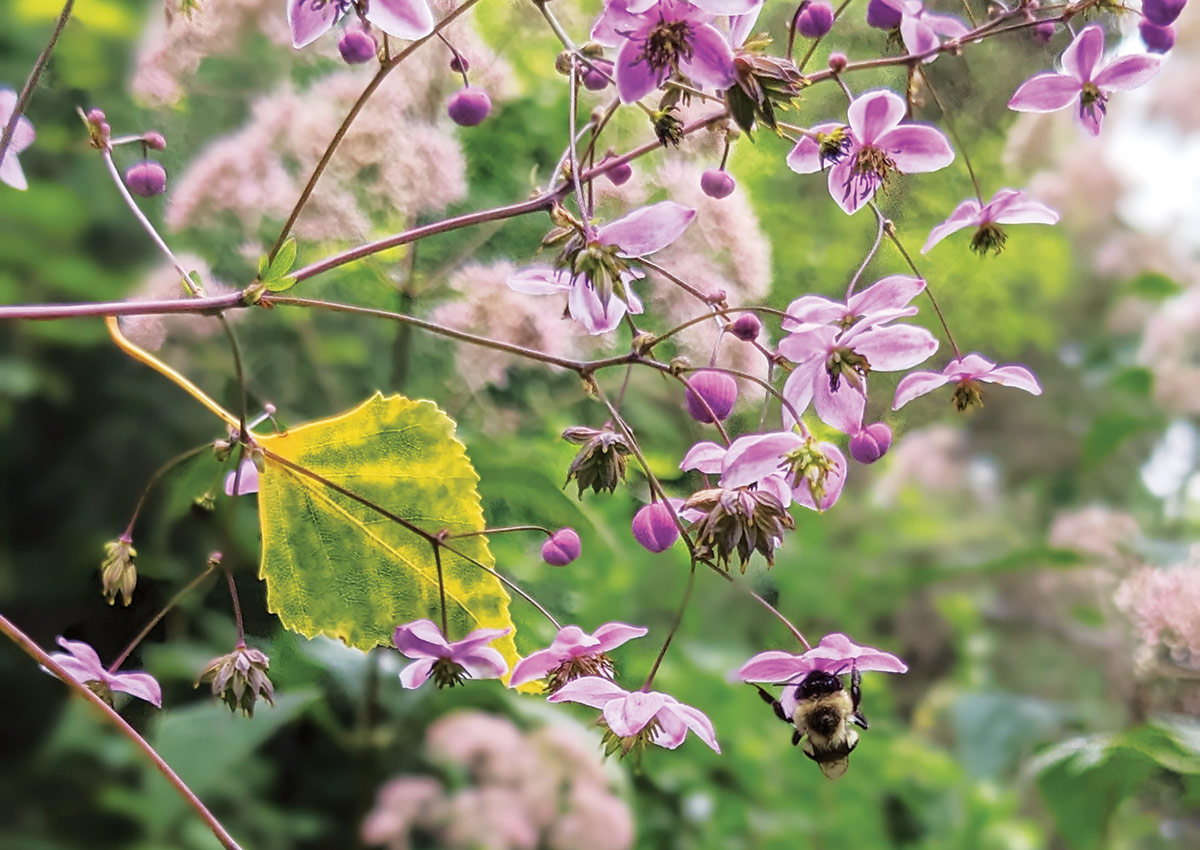
Don’t be afraid of self-sowers
Plants that freely reseed, such as meadow rue, are the true workhorses of my garden. They fill holes and nudge out unwanted weed seedlings, adding beauty in the process. In spring they are easily removed or transplanted if they aren’t growing where you want them. Or you can leave them to fill gaps between slower-growing perennials and then pluck them out later if they’ve grown too big for their neighbors.
Jeff Epping is the principal designer at Epping Design and Consulting and the former director of horticulture at Olbrich Botanical Gardens in Madison, Wisconsin.
Photos, except where noted: Danielle Sherry
Fine Gardening Recommended Products

Buffalo-Style Gardens: Create a Quirky, One-of-a-Kind Private Garden with Eye-Catching Designs
Fine Gardening receives a commission for items purchased through links on this site, including Amazon Associates and other affiliate advertising programs.

Planting in a Post-Wild World: Designing Plant Communities for Resilient Landscapes
Fine Gardening receives a commission for items purchased through links on this site, including Amazon Associates and other affiliate advertising programs.

ARS Telescoping Long Reach Pruner
Fine Gardening receives a commission for items purchased through links on this site, including Amazon Associates and other affiliate advertising programs.


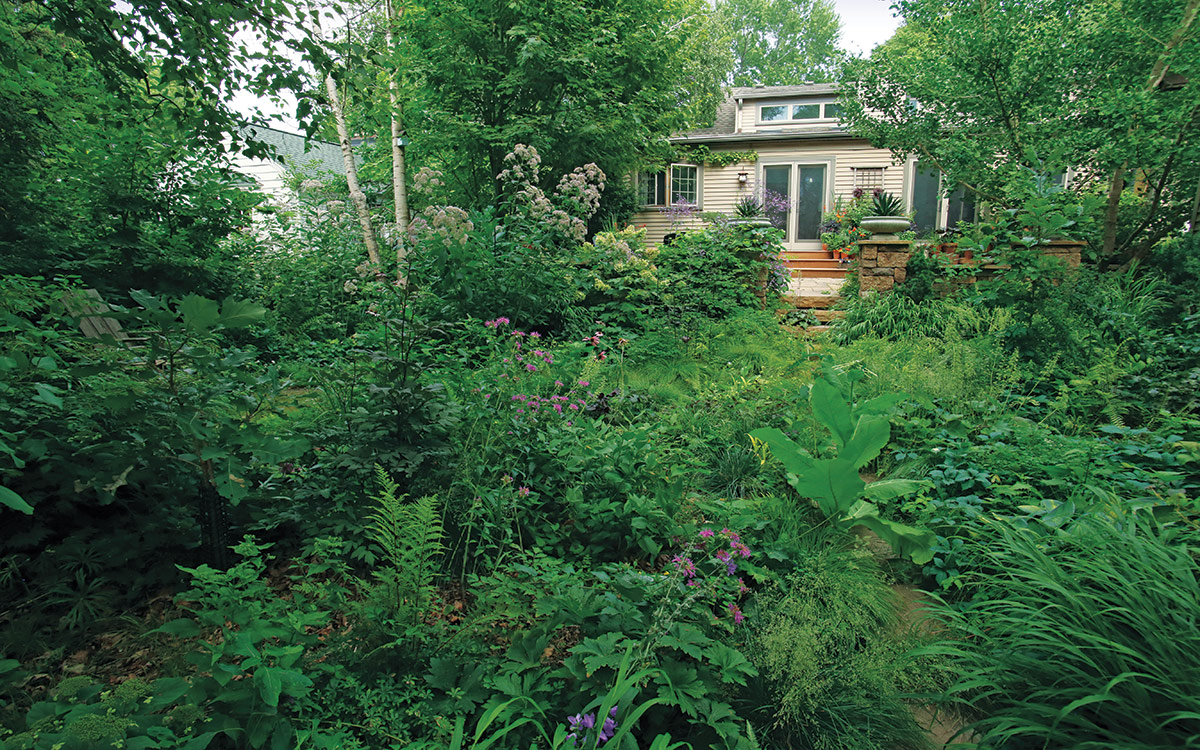
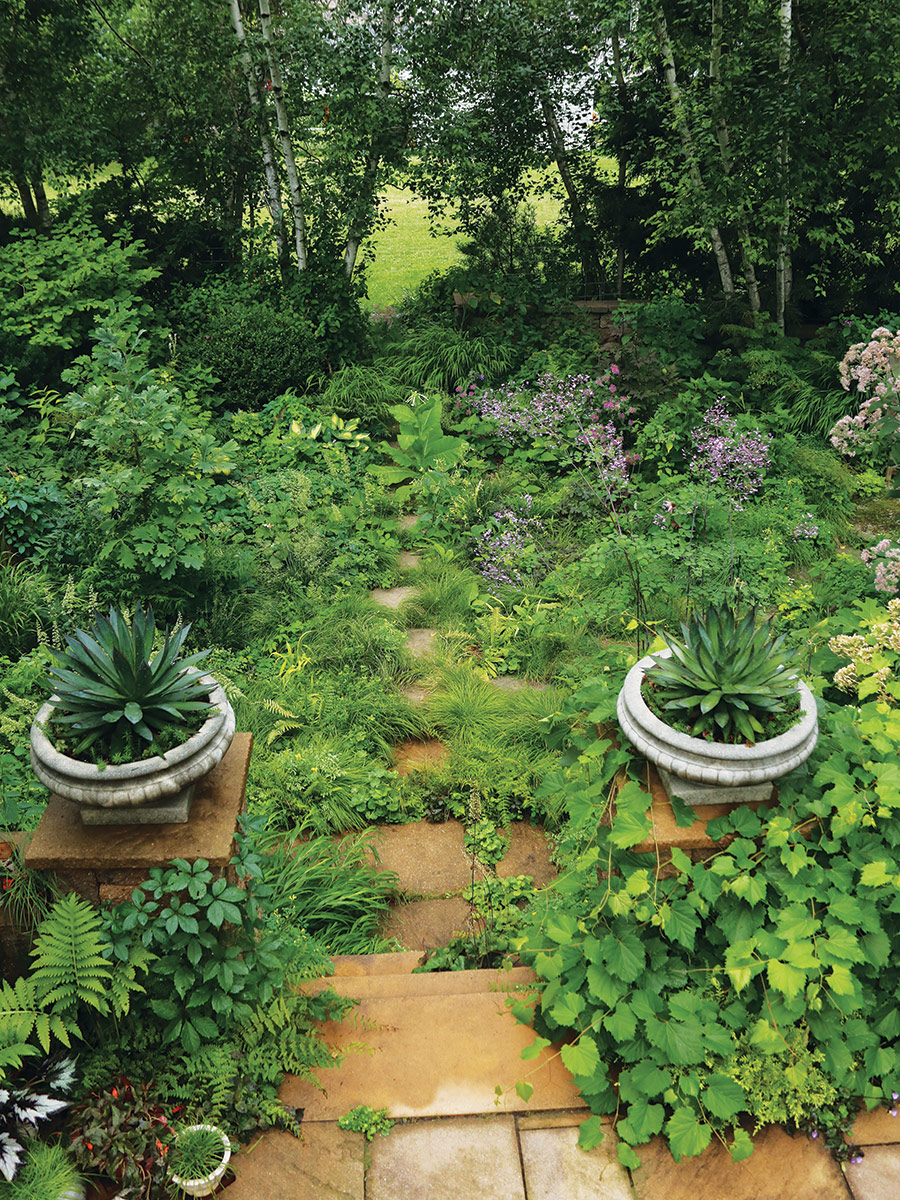
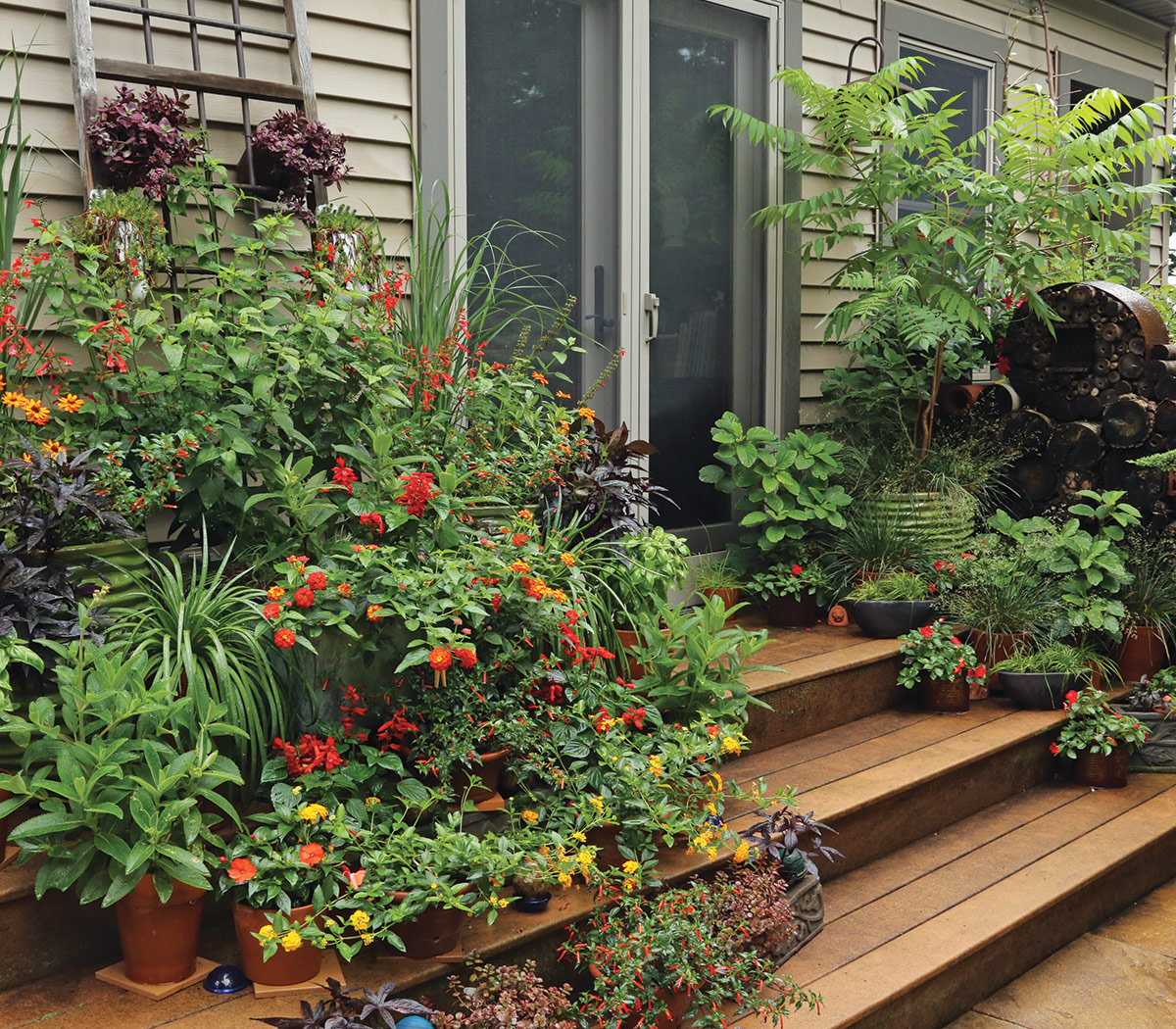
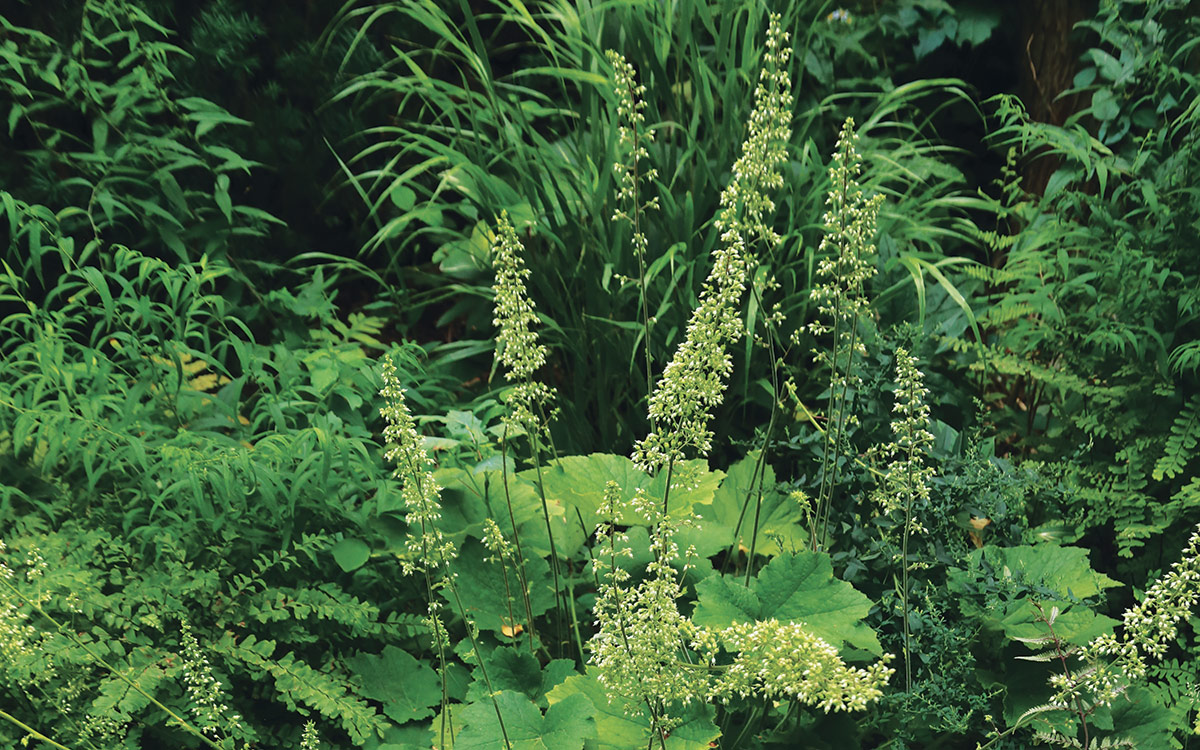

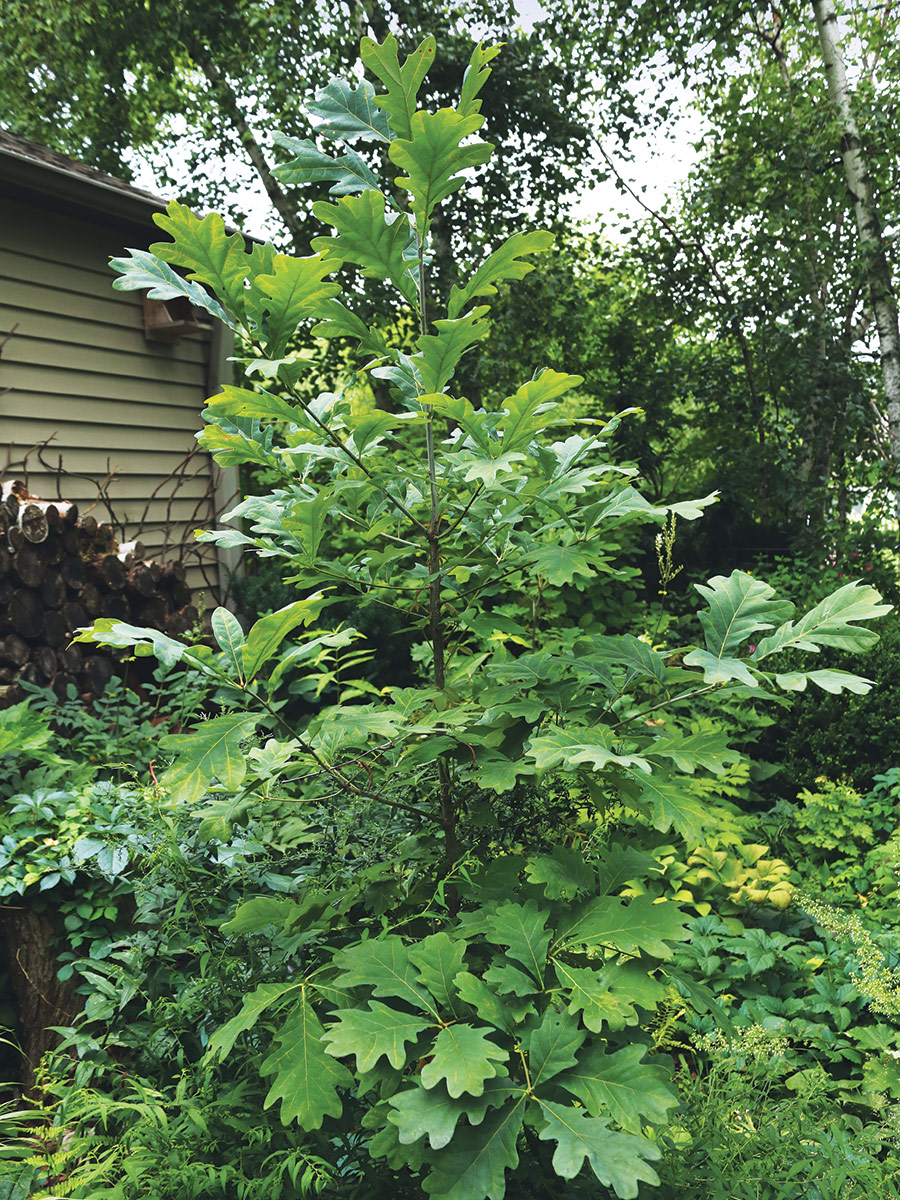

















Comments
Log in or create an account to post a comment.
Sign up Log in